Technique
The art of Bandhana is a highly skilled process. The technique involves dyeing a fabric which is tied tightly with a thread at several points, thus producing a variety of patterns like Chandrakala, Bavan Baug, Shikari etcetera; depending on the manner in which the cloth is tied. The main colour used in Bandhana are yellow, red, blue, green and black.
The main colours used in Bandhana are natural. As Bandhani is a tie and dye process, dying is done by hand and hence best colours and combinations are possible in Bandhanis.
The Bandhani work has been exclusively carried out by the Khatri community of Kutchh and Saurashtra. A meter length of cloth can have thousands of tiny knots known as 'Bheendi' in the local language ('Gujarati'). These knots form a design once opened after dyeing in bright colours. Traditionally, the final products can be classified into 'khombhi', 'Ghar Chola', 'Chandrakhani', 'Shikari', 'Chowkidaar', 'Ambadaal' and other categories.
Ahmedabad in India is known for Bandhanis. Bandhani work is also done in Rajasthan state but having different types of colours and designs than the Kutch and Saurashtra of Gujarat. Establishments of varying sizes in the entire Kutch belt in Gujarat produce many varieties of Bandhani. This Bandhani style is called as the Kutchi Bandhani, which is also practised in the Sourasthra region of Gujarat. Bandhani tying is often a family trade, and the women of these families work at home to tie patterns. Mandavi, Bhuj, Anjar, Jamnagar, Morbi, Rajkot, Deesa are some of the main towns in Gujarat, where Bandhani is created. The city of Jamnagar, located in the Gulf of Kutch, in Gujarat is well known for its red Bandhani. Dyeing process of Bandhani is carried out extensively in this city, as the water of this area is known to give a particular brightness to colors, specifically reds and maroons.
Application
Bandhani is being sold all over India and the demand has increased over the past few decades. Sales go up during the festive and wedding seasons in India. The bulk of the market is domestic with the main market being in Gujarat. As per survey, the most exclusive Bandhanis are being sold at well-known retailers Khatri Jamnadas Bechardas in Mumbai, and Khatri Mangalya Heritage Bandhani in Ahmedabad.
Meaning & Symbols
In Bandhani, different colours convey different meanings. People believe that wearing Red brings good luck to a newly wed's life.
Origin
Earliest evidence of Bandhani dates back to Indus Valley Civilization suggest that dyeing was done as early as 4000 B.C. The earliest example of the most pervasive type of Bandhani dots can be seen in the 6th century paintings depicting the life of Buddha found on the wall of Cave I at Ajanta.[9] This art finds its mentions in the Alexander the great time texts about the beautiful printed cottons of India. As per evidences in Historical Texts, the first Bandhani saree was worn at the time of Bana Bhatt`s Harshacharita in a royal marriage. It was believed that wearing a Bandhani saree can bring good future to a bride. Ajanta walls stand for the evidences of these Bandhani sarees. The dyers have experimented with the use of different elements both natural and man made for ages. Also there are experiments with different binding/tying techniques to create patterns on cloth immersed in containters of dye. Different types of tie and dyes have been practiced in India, Japan, and Africa for centuries. Tie-dye became fully developed in China during the T`ang dynasty (618-906 A.D.) and in Japan during the Nara period (552-794 A.D.).
Bandhani work in India was started by the Khatri Community of Gujarat The term `Bandhani` is derived from the word `Bandhan` that means tying up. It is an ancient art practise that is mainly used in the state of Gujarat and Rajasthan. Some 5000 years ago Indian Tie & Dye or Bandhani was started. Places in Rajasthan like Jaipur, Sikar, Bhilwara, Udaipur, Bikaner, Ajmer, and Jamnagar in Gurjarat are the well known centres producing odhnis, sarees and turbans in Bandhani. Different communities in Rajasthan have for ages followed the tradition on tying turbans with different patterns of bandhani on their heads. These were used to identify which community the person belonged to.

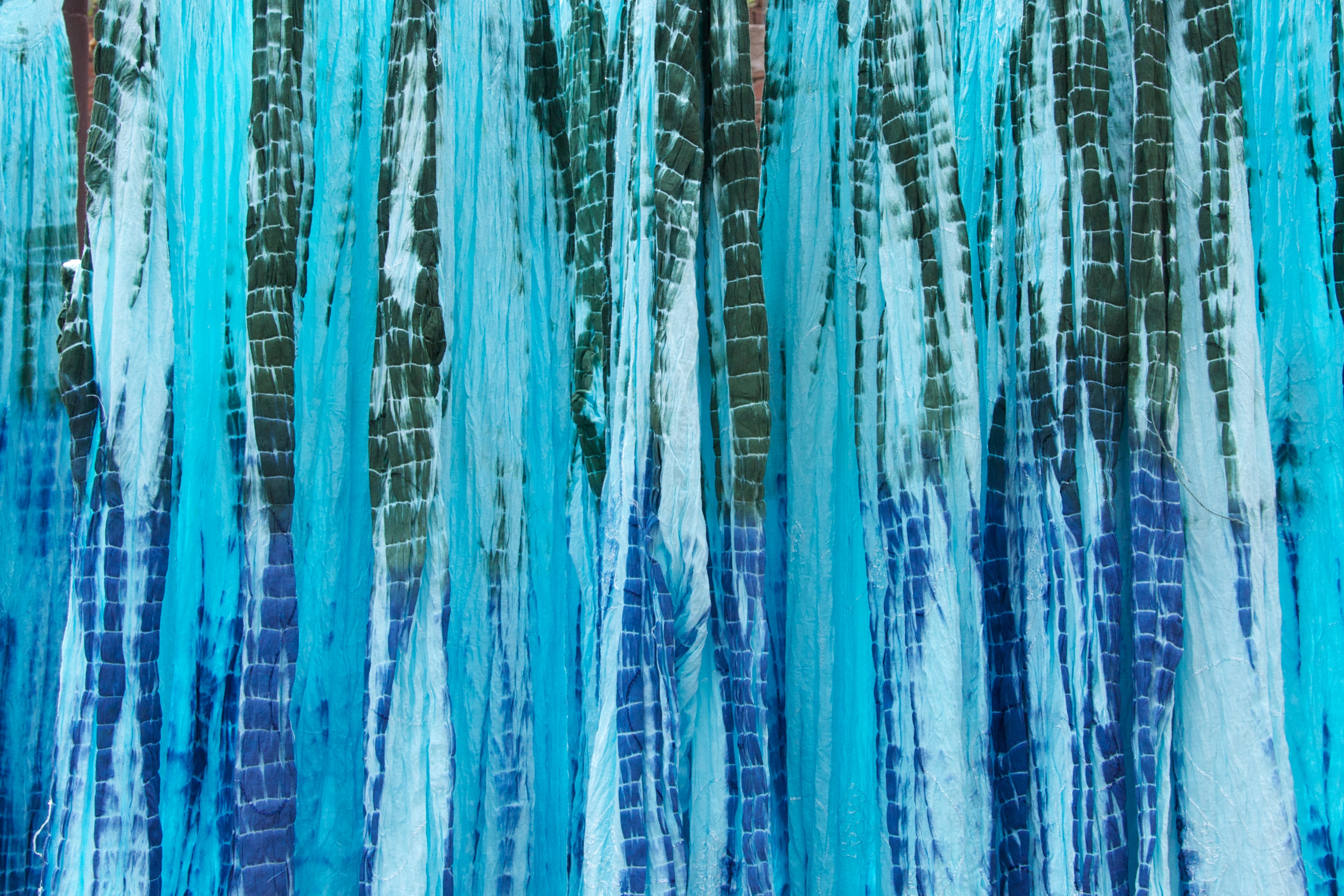
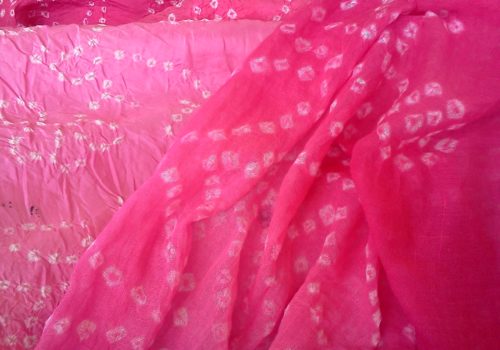
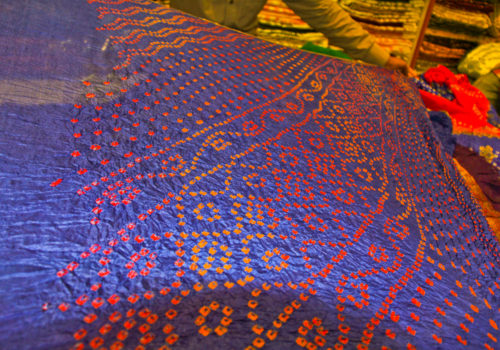
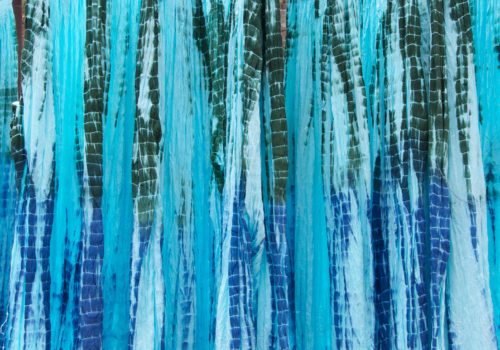
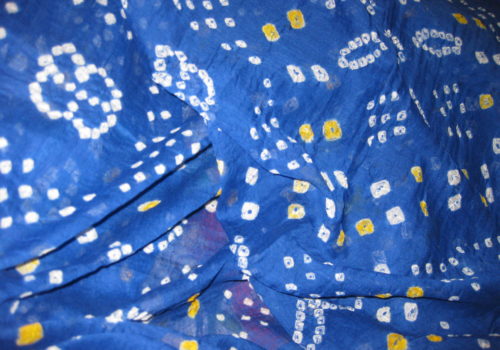
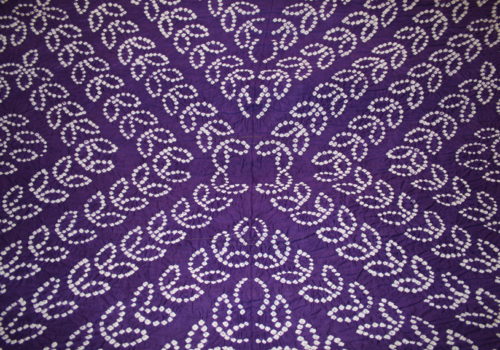

5 thoughts on “Bandhani”
Comments are closed.